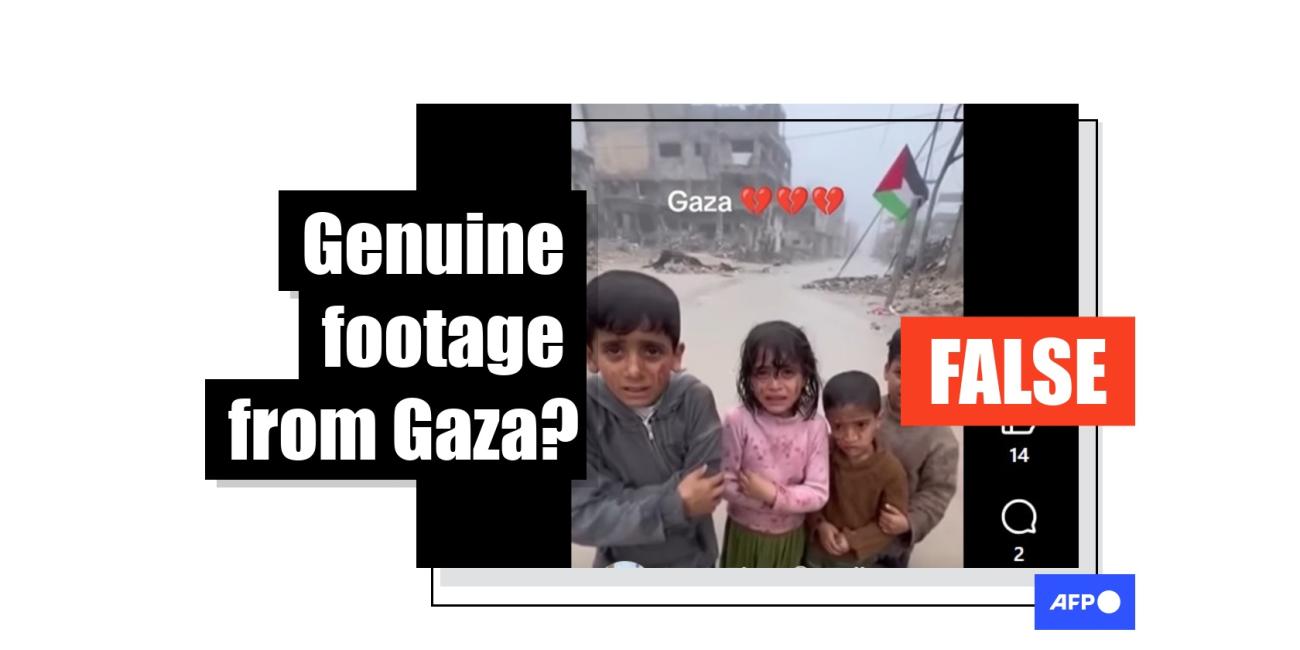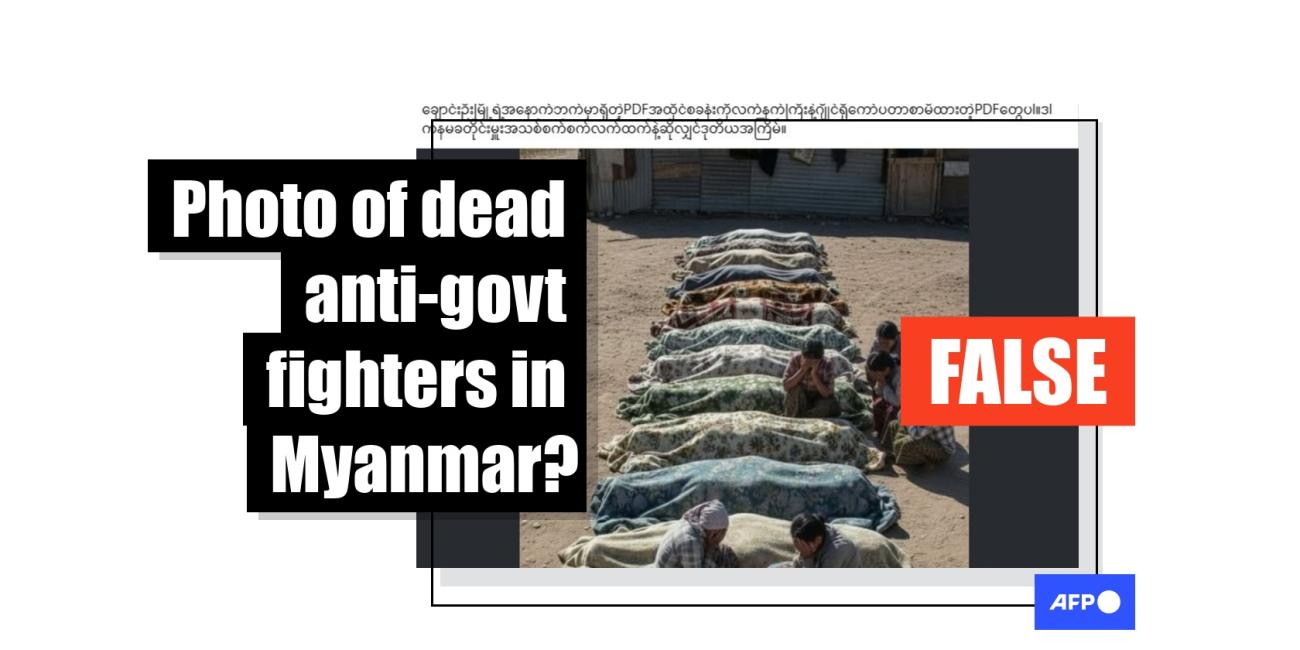
Image of 'Typhoon Kalmaegi's impact on Philippines' made with AI
- Published on November 7, 2025 at 09:46
- 2 min read
- By Pasika KHERNAMNUOY, Purple ROMERO, Lucille SODIPE, AFP Philippines, AFP Thailand
After Typhoon Kalmaegi unleashed record rainfall and flooding as it tore through the central Philippines, an AI-generated image was shared in posts falsely claiming it showed houses destroyed by the storm. The image was flagged as being made with Google's AI tools, and was traced to an account that regularly posts AI visuals.
"DEATH TOLL RISES TO 52," reads part of the caption of an image shared on Facebook on November 5, 2025.
It adds the death toll due to Typhoon "Tino" -- the local name for Typhoon Kalmaegi -- had come from the National Disaster Risk Reduction and Management Council (NDRRMC).
The image shows rows of houses reduced to rubble, flooded streets and uprooted trees.
It surfaced after Typhoon Kalmaegi, one of the deadliest storms this year, carved a path of destruction through central Philippines (archived link).
The death toll from the storm stands at 188, with another 135 people missing.

The image was also shared in similar Philippine and Thai posts.
While the storm unleashed record rainfall and flooding that swept away cars, trucks and even shipping containers, the circulating image does not show its aftermath.
A reverse image search on Google showed the image was flagged as "Made with Google AI".
The ability to detect AI-generated images is based on Google's SynthID technology, which was launched by its DeepMind AI lab in 2023 (archived here and here).

A subsequent keyword search led to a Facebook post from November 4 that shared the same image with an updated caption stating it used "AI-generated visuals created for educational and awareness purposes only" (archived link).
"This post uses simulated imagery to illustrate real humanitarian challenges caused by extreme weather events. Always rely on official updates from PAGASA (Philippine Atmospheric, Geophysical and Astronomical Services Administration), NDRRMC, and local authorities for verified information," it adds.
The user's bio also states that they create AI visuals.

The image also contains visual errors indicative of AI-generated content, such as people with misshapen body parts.

AFP has previously debunked other falsely shared AI-generated images that spread in the aftermath of disasters.
Copyright © AFP 2017-2025. Any commercial use of this content requires a subscription. Click here to find out more.
Is there content that you would like AFP to fact-check? Get in touch.
Contact us




